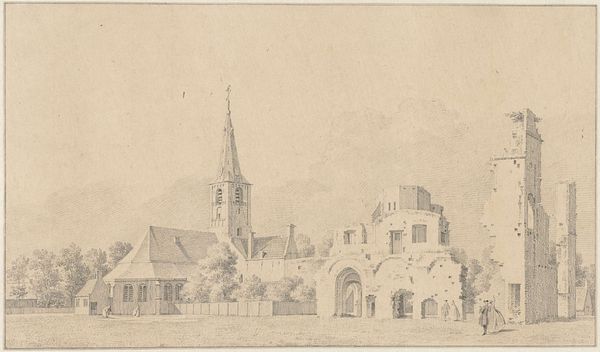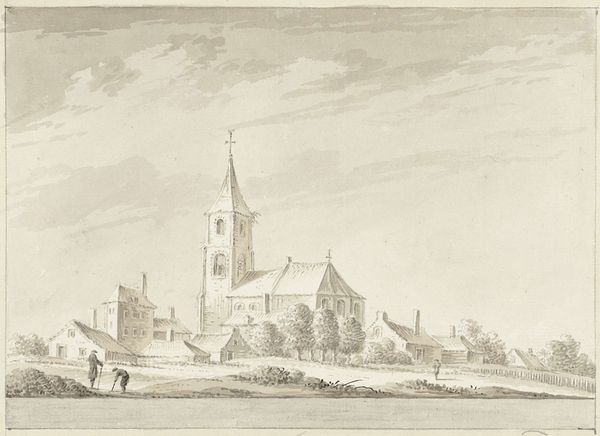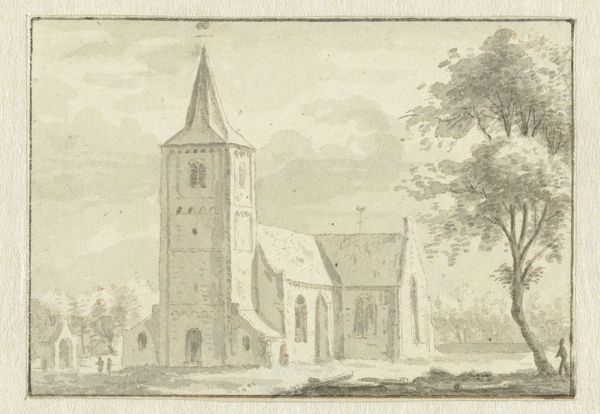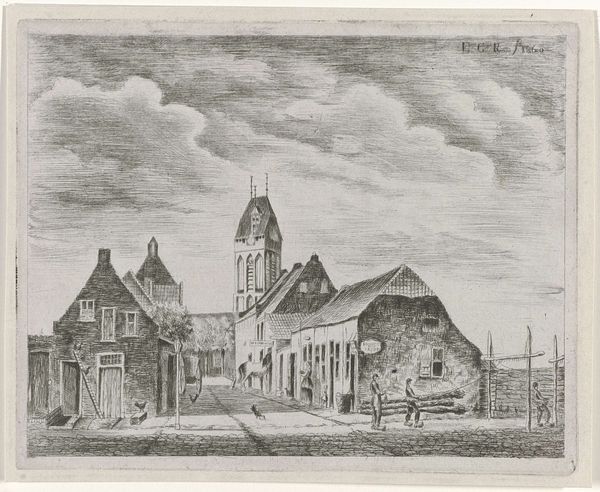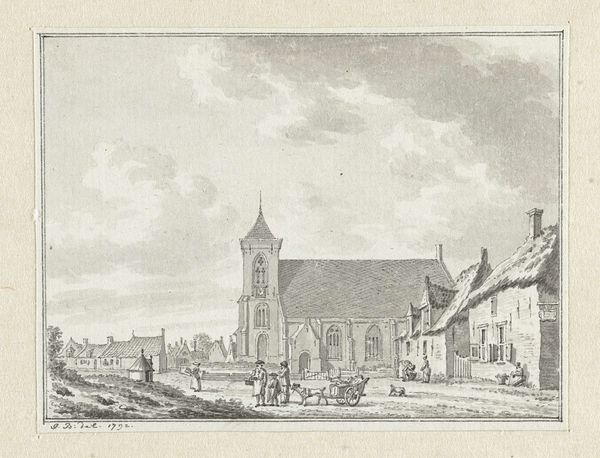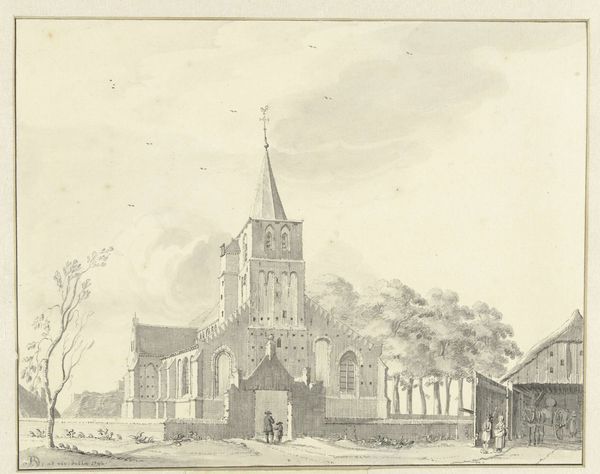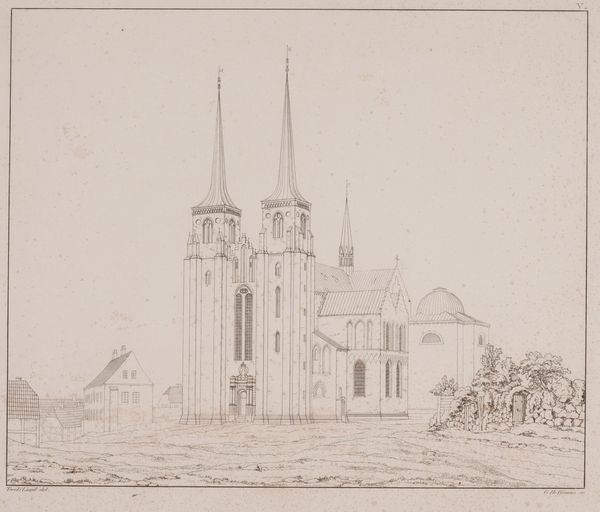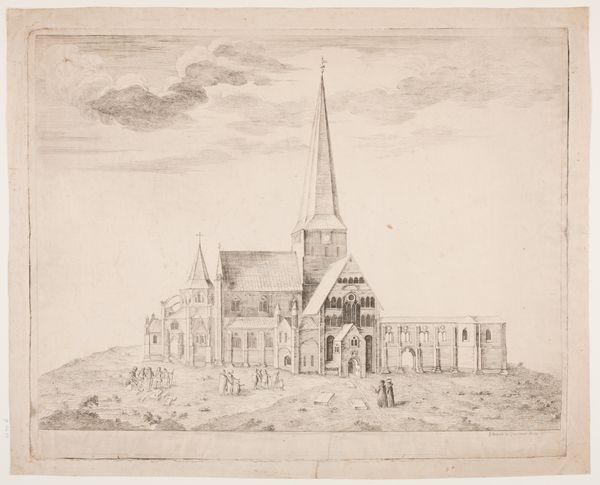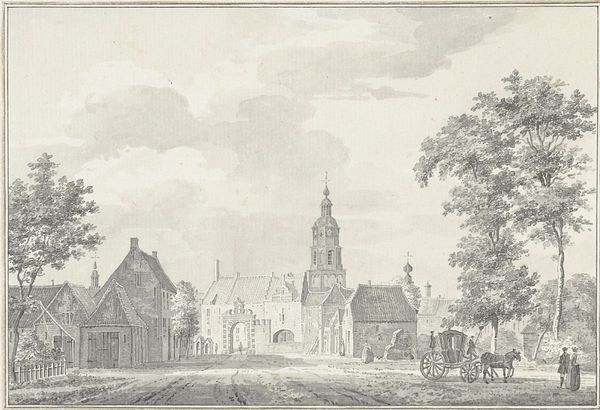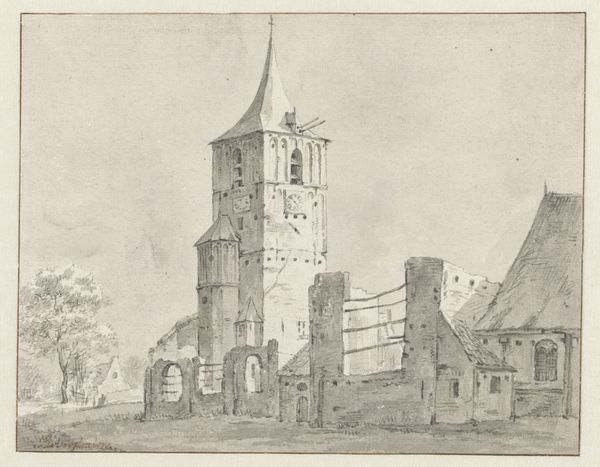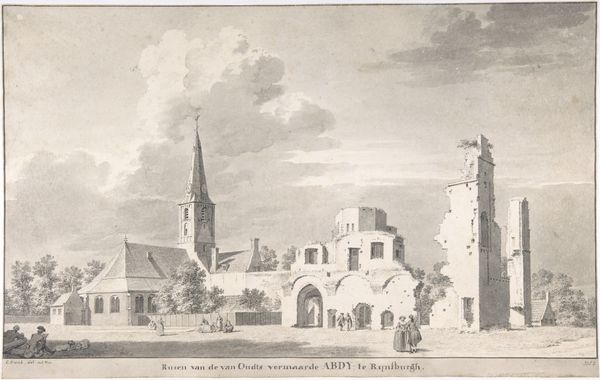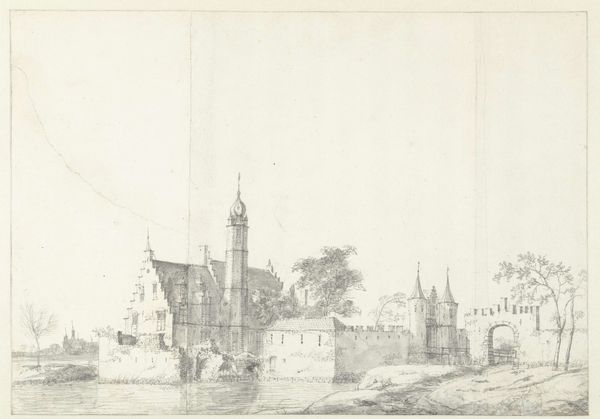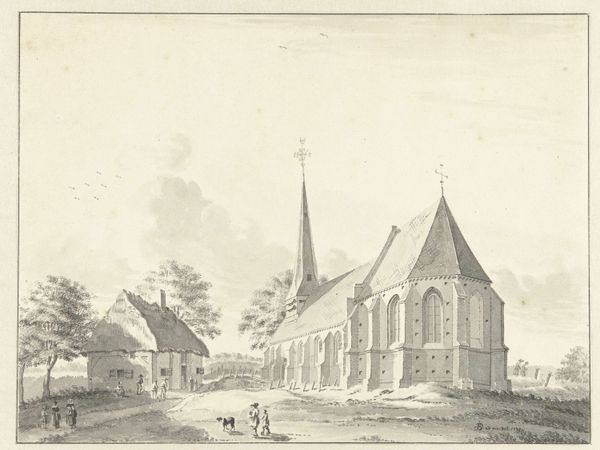
drawing, etching, pencil, architecture
#
drawing
#
etching
#
pencil sketch
#
landscape
#
etching
#
pencil
#
architecture
Dimensions: height 180 mm, width 311 mm
Copyright: Rijks Museum: Open Domain
Editor: This is "Church and the Ruins of the Abbey of Rijnsburg" by Hendrik de Winter, made sometime between 1727 and 1790. It’s a pencil and etching drawing. I find the juxtaposition of the intact church and the ruined abbey quite striking. What do you see in this piece, particularly concerning its historical context? Curator: This work really speaks to the power of institutions and their fluctuating status over time. The solid church next to the crumbling abbey invites reflection on the shifting sands of religious and political power in 18th century Netherlands. What do you think about how the artist uses line and form to convey these ideas? Editor: The sharp, clear lines of the church contrast with the broken, jagged edges of the abbey, making the ruin seem more vulnerable. It also highlights what persisted, versus what did not. Curator: Exactly! Think about the patronage that would have sustained each institution, and how that support evolved. Was the depiction of ruins a common trope in art from this period? Editor: I believe so, to evoke a sense of the past or even vanitas, right? A reflection on the transient nature of earthly things. Curator: Precisely! The choice to depict Rijnsburg’s abbey ruins aligns with the broader artistic interest in the romanticism of ruins, often seen as symbols of vanished eras and contemplation of history itself. I wonder what the townspeople thought about the work at the time, having to witness the decline while being in proximity to its spiritual implications every day. Editor: I hadn't considered the local impact on this, or how images shape a town's perceptions. Thank you for highlighting these fascinating social aspects. Curator: My pleasure. Thinking about art within its societal frameworks always reveals richer layers of meaning.
Comments
No comments
Be the first to comment and join the conversation on the ultimate creative platform.
